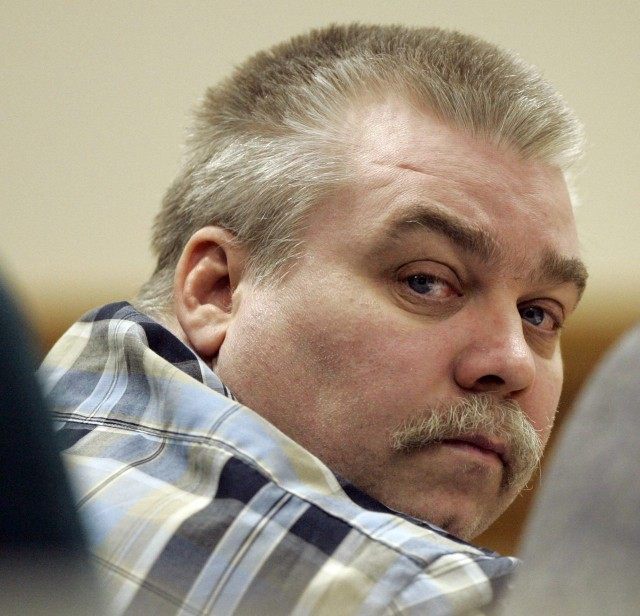MILWAUKEE (AP) — An online petition has collected hundreds of thousands of digital signatures seeking a pardon for a pair of convicted killers-turned-social media sensations based on a Netflix documentary series that cast doubt on the legal process.
The 10-part “Making a Murderer,” which portrays the case of Steven Avery and his then-teenage nephew Brendan Dassey, has prompted celebrities and armchair sleuths to flood message boards and Twitter feeds.
Authorities involved with the Wisconsin case are saying the series was slanted and omits crucial facts that led to Avery and Dassey being found guilty in the death of photographer Teresa Halbach.
The filmmakers, meanwhile, have stood by their work that spans nearly a decade and largely concentrates on the defense and perspective of Avery and Dassey’s relatives.
The rush of attention has left many wondering: How did we get here? And what’s next?
___
Q: SO WHAT’S THE BIG DEAL?
A: Avery made national headlines in 2003 when he was released after spending nearly two decades behind bars after being wrongfully convicted of rape. Two years later, Avery and Dassey were charged with killing Halbach, who visited the Avery family salvage yard to take photos of a minivan on Halloween. Her bones and belongings were found burned near Avery’s trailer. Both were convicted and sentenced to life terms, but only Dassey is eligible for parole — in 2048.
___
Q: WHY HAS THE DOCUMENTARY BEEN SO POPULAR?
A: The series’ release was impeccably timed. It was released before Christmas, while much of the nation was on holiday break and had time to delve into a 10-hour series. Also, it comes on the heels of the popular podcast “Serial,” which lays out a complex legal case and has generated intense social media participation.
___
Q: SO WHAT EXACTLY IS IN THE DOCUMENTARY?
A: The documentary strongly suggests the possibility that Manitowoc County sheriff’s deputies planted evidence against Avery, including a key found in his bedroom and blood found in the victim’s vehicle. But Sheriff Robert Hermann denied that Tuesday. “They did not plant evidence,” Hermann said. “I trust them 100 percent. Quite frankly, I think justice was served in this case.” He said he watched the series, and “I call it a film, it’s missing a lot of important pieces of evidence.”
___
Q: WHY DO AUTHORITES SAY IT’S BIASED?
A: The series spends much of its time detailing the perspective of Avery and Dassey family members. The case’s special prosecutor, Ken Kratz, refused to comment to The Associated Press, but he has told other outlets that the documentary ignores the majority of the physical evidence. The omissions include the fact that Avery’s DNA was found on the hood latch on Halbach’s SUV, which was hidden on the salvage lot. Kratz has also said a bullet fired from Avery’s gun was found in his garage with Halbach’s DNA on it.
___
Q: WHAT DO THE FILMMAKERS SAY?
A: Laura Ricciardi and Moira Demos have stood by their work. They said in an email to the AP through Netflix representatives that critics who might say they intentionally omitted or underplayed key evidence to make the series more entertaining or tragic are wrong. “Those accusations are untrue and unfounded,” the statement read.
___
Q: WHAT ABOUT THAT ONLINE PETITION? IS IT GOING TO WORK?
A: It seems unlikely for a lot of reasons. For one thing, it started by petitioning President Barack Obama, who has no such authority in this type of case, since it’s not a federal matter. The request posted to Change.org, which has generated nearly 280,000 digital signatures, was recently rewritten to include Wisconsin Gov. Scott Walker and remove the word “presidential” from the text of the appeal. However, Walker hasn’t granted a single pardon since he took office five years ago. Walker spokeswoman Laurel Patrick said Tuesday in an email to the AP that the governor hasn’t watched the series and that “early in his administration, Gov. Walker made the decision not to issue pardons. Those who feel they have been wrongly convicted can seek to have their convictions overturned by a higher court.”
___
Q: WHAT ABOUT THE VICTIMS?
A: Halbach’s brother Mike Halbach has declined comment since releasing a statement from the family before the documentary became public. “Having just passed the 10-year anniversary of the death of our daughter and sister, Teresa, we are saddened to learn that individuals and corporations continue to create entertainment and to seek profit from our loss,” the statement read. “We continue to hope that the story of Teresa’s life brings goodness to the world.”
The victim from the 1985 rape case has declined comment.
___
Q: WHAT HAS THE REACTION BEEN LIKE?
A: It’s been all over the map. Celebrities have tweeted about how into the series they are, late night talk show host Seth Meyers spoofed it and fake Twitter accounts have been set up for some of the main players in the case. However, Sheriff Hermann said some of his officers have received threats in emails and voicemails. He said one was from a convicted felon who said an officer should “take his own life, or else he’d come up there and take it for him.” Hermann said Tuesday that threat was passed along to Florida authorities to investigate.
___
Follow Greg Moore at https://twitter.com/writingmoore . His work can be found at http://bigstory.ap.org/journalist/greg-moore . Follow Carrie Antlfinger at https://twitter.com/antltoe .
___
This story has been corrected to show the last name of the talk show host is Meyers, not Meyer.

COMMENTS
Please let us know if you're having issues with commenting.